#Tunguska-Siberia in Russia June 30
Text












31 BC battle of ACTIUM vs WAR in Heaven 1908.
#RudyBoxman discovered that the sea and land War was connected with the disaster in 1908 , Tunguska-Siberia in Russia June 30 , 1908 See the HD photo's here. #news #Actium #HDphoto #nieuws #science #HighDefinition #school #history
#31 BC battle of ACTIUM vs WAR in Heaven 1908.#RudyBoxman discovered that the sea and land War was connected with the disaster in 1908#Tunguska-Siberia in Russia June 30#1908 See the HD photo's here.#news#Actium#HDphoto#nieuws#science#HighDefinition#school#history#rudyboxman#rjbteam#design#designer#worldnews#tshirtdesign#tshirtprinting#christmas
0 notes
Text
The Tunguska Event: A Comprehensive Analysis
Abstract: The Tunguska Event, transpiring on June 30, 1908, in the remote Siberian region of Russia, remains one of the most enigmatic occurrences in scientific history. This report provides an in-depth examination of the Tunguska Event, encompassing its historical context, the nature of the event, prevailing theories, and its enduring scientific significance. Utilizing a diverse array of primary and secondary sources, this study aims to elucidate the multifaceted aspects of this phenomenon and contribute to a deeper understanding of its complexities.
Introduction: The Tunguska Event denotes a cataclysmic explosion that devastated an extensive swath of uninhabited forestland near the Podkamennaya Tunguska River in Siberia. Despite the absence of human casualties, the event left an indelible mark on the landscape, flattening approximately 2,000 square kilometers of forest. The lack of a discernible impact crater coupled with the absence of conclusive evidence regarding the event's origin has spurred decades of scientific inquiry and speculation.
Historical Context: The remote and sparsely populated nature of the Tunguska region compounded the challenges associated with documenting the event. Initial reports emerged from nearby towns, with witnesses recounting a luminous object streaking across the sky followed by a deafening explosion. However, the event's significance only became apparent following expeditions led by Russian scientist Leonid Kulik in the 1920s, which revealed the extensive scale of destruction.
Nature of the Event: The Tunguska Event is characterized by a series of distinct phenomena, including an initial bright flash visible over a vast expanse, followed by a shockwave that toppled trees across hundreds of square kilometers. Eyewitness accounts and subsequent scientific investigations attest to the absence of a discernible impact crater, leading researchers to postulate alternative explanations, notably the aerial burst of a celestial object.
Prevailing Theories: Numerous hypotheses have been posited to elucidate the origins of the Tunguska Event, ranging from meteoric impacts to cometary explosions and even exotic theories involving anti-matter and black holes. Among these, the leading explanation proposes the airburst of a stony asteroid or comet, with the resultant shockwave causing the observed devastation. However, challenges persist in reconciling certain discrepancies, such as the absence of significant meteoritic material at the impact site.
Scientific Significance: The Tunguska Event holds profound implications for various scientific disciplines, including astronomy, geophysics, and planetary defense. Insights garnered from the study of this event have facilitated advancements in impact modeling, risk assessment, and the development of strategies to mitigate the potential threat posed by near-Earth objects. Moreover, ongoing research endeavors continue to refine our understanding of the dynamics underlying cosmic collisions and their ramifications for terrestrial environments.
Conclusion: The Tunguska Event stands as a testament to the enduring mysteries of the cosmos, captivating the imagination of scientists and laypersons alike for over a century. Despite concerted efforts to unravel its enigma, numerous questions persist regarding the precise nature and origin of this singular phenomenon. As scientific inquiry progresses and technological capabilities advance, it is conceivable that the Tunguska Event will continue to yield insights into the dynamic interplay between celestial bodies and our planet.
References: [Provide a comprehensive list of scholarly works, scientific papers, and authoritative sources consulted in the preparation of this report.]
2 notes
·
View notes
Text
Little Bang Theories
On the afternoon of February 28, 1990, residents of Nowata were rocked by an unusual blast originating somewhere south of town. No one had any idea what could have caused the explosion, and since nobody saw anything actually blow up, there was little investigation.
However, when local landowner Bill Mitchell tried to find out why the water level was unusually high in Double Creek, which runs through his property, he discovered a large blast site along the creek bank. As Mitchell told the Tulsa World, it looked like "a giant mole went all under the ground. There is no telling how big a hole is under there. You can hear water falling. . . . In one place the water was shooting up a couple of feet . . . like a fountain."
Mitchell said it would have taken an immense amount of pressure to cause such damage. Having worked in the oil fields most of his life, he speculated that it may have been the result of a gas pocket, but he admitted that it would have had to be tremendous one to move things the way it did.
This wasn't Oklahoma's first inexplicable explosion. Back in 1948, residents all across the northwestern portion of the state had witnessed an explosion "of atomic proportions" high in the sky. The crews of two B-29 planes reported seeing a ball of fire just prior to the explosion, which they said occurred well above their altitude of ten thousand feet. The detonation, which was described as a "fiercely brilliant white flash," generated a wide cloud of smoke. Many thought it was some kind of massive airline disaster, and astronomers surmised that it might have been an exploding meteor, similar to that which allegedly caused The Tunguska Event, a devastating blast in remote Siberia, Russia, in June 1908.
Nearly fifty years later, in 1995, central Oklahnma would be stymied by yet another blast, this time in Kingfisher, only two weeks after domestic terrorism brought down The Alfred P. Murrah Federal Building in Oklahoma City. The explosion was prefaced by a bomb scare. No bomb was found, but then, just forty-five minutes later, a thunderous report could be heard up to thirty miles away. Problem was, nobody could tell where it came from and there didn't seem to be any damage.
A man was later arrested for making the false bomb threat, but still no one could figure out the origin of the actual explosion. Both the Air Force and the Federal Aviation Administration said no planes in the area had been traveling at supersonic speeds, which ruled out a sonic boom. The county sheriff's department had no luck in solving the mystery, either. The blast still remains an enigma.
Yet another loud boom was recorded on February 2, 1999, at around 7:30 p.m. in Elk City. Similar to previous blasts, it shook window panes and prompted numerous phone calls to authorities. Oddly, another noise had caused a bit of a stir just the week before when citizens reported, a sound like that of a rocket taking off. Of course, there was no apparent cause for either incident. Even ufologist and president of the UFO-research group Jim Hickman, who lives in nearby Elk City, could offer no probable source.
Why so many acoustic events in the Sooner State? Like most unusual phenomena, it's probably impossible to say. Then again, maybe these sorts of things go on all the time around the world. Maybe Oklahoma is the only place still quiet enough for residents to hear them.
0 notes
Text
Tunguska event, enormous explosion that is estimated to have occurred at 7:14 AM plus or minus one minute on June 30, 1908, at an altitude of 5–10 km (15,000–30,000 feet), flattening some 2,000 square km (500,000 acres) and charring more than 100 square km of pine forest near the Podkamennaya Tunguska River in central Siberia (60°55′ N 101°57′ E), Russia. The energy of the explosion is estimated to have been equivalent to the explosive force of as much as 15 megatons of TNT—a thousand times more powerful than the atomic bomb dropped on Hiroshima, Japan, on August 6, 1945.
instagram
0 notes
Photo

The Tunguska event
On the morning of June 30, 1908, 770 square miles of forest in Siberia, Russia were flattened by what would have appeared to have been an explosion, except that there were no witnesses and no other evidence. The phenomenon, known as “the Tunguska event,” has been classified by scientists as the largest “impact event” (which means a recordable impact between two astronomical objects, such as an asteroid and the earth) in recorded history. Yet no “impact crater” has ever been found (which would be an important earmark of an impact event). Thus, scientists can only surmise what may have happened, which may be that an asteroid exploded over the earth, and the destruction that ensued beneath it in Siberia was the result of after-effects.
8 notes
·
View notes
Text
The Top 10 Greatest Russian Mysteries of All Time

Russia is a vast country, by far the largest country on earth in terms of land mass. The Soviet Union was much larger even. It's not surprise that some of the most famous unsolved mysteries in the world come out of that part of the planet. Join us as we glance at 10 of the most famous unsolved mysteries from there.
10 - Arkaim
Photo of Arkaim by Rafikova m - Own work, CC BY-SA 4.0
Arkaim is an ancient citadel built nearly 4,000 years ago that is full of mystery. The entire city was built around the spiritual idea of "reproducing the model of the universe" which was derived from ancient Indian literature. It was built in three concentric rings and featured the ancient swastika religious symbol found throughout the region at the time. It held as many as 2,500 people at the time, making it the largest citadel in the region. The city has also been associated with ancient Aryan culture (not the Hitler variety) and may have been the source of Vedic knowledge in India as well as the Asgard mentioned in ancient Germanic literature.
9 - Russian Ghost Cities

Photo By Laika ac from USA - Kadykchan, CC BY-SA 2.0
The USSR or Soviet Union built dozens of cities with controlled access, now known as Ghost Cities. These cities were completely cut off from the outside world except for gated roads coming in and out of the towns. Most were built around nuclear power or research centers. These towns are nearly all abandoned now, a testament to the iconic Brutalist architecture of the period.
8 - Lake Vostok
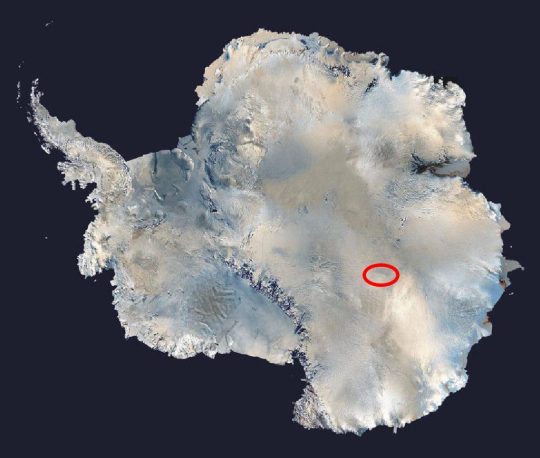
Lake Vostok is by far the most remote location heavily researched by Russian scientists.
Lake Vostok is not in Russia. It is a lake under about 2.5 miles of ice. Bizarrely enough, Russian researchers have been fascinated with drilling through the ice to see what was underneath. Beginning in the 1950s until 2011, from the height of the Cold War to Putin's Russia, they drilled through the ice to see what ancient forms of life may lie underneath. The unrelenting focus on getting through the ice of a lake in Antarctica has left many of us scratching our heads.
7 - The Petrozavodsk Phenomenon

The Petrozavodsk object stands out in UFO research as one of the most puzzling and well documented cases of all time.
On September 20th, 1977, one of the most widely viewed celestial events of all time unfolded over the city of Petrozavodsk, Russia (The USSR at the time). The event was witnessed from Copenhagen, Denmark all the way to Helsinki in Finland. According to eyewitnesses, 48 unidentified luminescent objects appeared in the atmosphere starting around 1:00 AM. The objects were observed for over two hours in various cities around the region. They appeared to shift direction abruptly, sometimes being stationary and sometimes traveling at enormous speeds. They were witnessed by military officials as well and there were official investigations into the issue. Nearly all of the eye witnesses also reported that the object emitted other glowing objects and that the objects were entirely silent.
6 - Psychotronics: The Russian MKULTRA

The Russian MKULTRA was as large its American counterpart.
From 1917 to 2003, the Soviet Union and the modern Russian government spent nearly $1 Billion on "psychotronics", similar to the MKULTRA program in the United States. One area of the program focused on a Soviet idea that the brain emits high-frequency electromagnetic waves which can be received by other brains. Research seemed to show that it could change the magnetic polarity of hydrogen nuclei and stimulate immune systems in various organisms. They even made a device which could store and generate the energy, known as a "cerpan".
5 - The Voronezh UFO

On September 27th, 1989, a UFO appeared to a group of children in the city of Voronezh in the Soviet Union. The children report taht the craft landed in front of them, a three eyed alien popped out with a robot. The alien mind controlled another witness by freezing them in their tracks. The craft then left and returned five minutes later to abduct a 16 year old boy. There were as many as 12 eyewitnesses to all of that. Interestingly, the craft was also reported by the local police department as well.
4 - UVB-76: The Buzzer
Somewhere in Russia, there is a radio tower which has been broadcasting an inexplicable series of sounds since at least 1973. To really grasp the strangeness of it, listen to the example audio above. The sound has evolved over time. It was mostly a chirping sound until 1990, where it changed to a buzzer sound. Nobody knows what on earth it means. One interesting detail is that, on occasion, conversations have been heard in the background which seems to indicate that the sound is going through an open mic.
3 - Nano Spirals and Coils of the Ural Mountains

An example of a nanocoil found in the Ural Mountains.
In the mysterious Ural Mountains, where our number one mystery also took place, researchers from the Russian Academy of Sciences discovered thousands of tiny nano-components which appear to be designed and very precisely manufactured. Dating to about 300,000 years ago, there is no known natural explanation for how they got there or what they were even designed to do. The objects, also known as Out of Place Artifacts or Ooparts, continue to amaze scientists. There are coils, shafts, spirals and other mechanical parts which are so small, they can only be appreciated with a microscope.
2 - The Tunguska Event

The Tunguska Event was a massive explosion in remote Siberia which still baffles scientists.
On June 30th of 1908, there was a massive explosion in Siberia which knocked down 80 million trees, covering an area of 830 square miles. The explosion had the power of as many as 30 megatons of energy, more than 1,000 times the energy of the atomic bomb which was dropped on Heroshima. This is, of course, well before any atomic weapons had been invented by humans. Speculation has ranged from UFOs to a meteorite exploding before it impacted the ground since there is no crater.
1 - The Dyatlov Pass Incident

The Dyatlov Pass Incident is the most mysterious Russian event of modern times.
The Dyatlov Pass Incident is without a doubt one of the greatest unsolved mysteries of the 20th Century. 10 skiers from the Ural Polytechnic Institute set out to travel to a nearby ski town. The trip was not thought to be dangerous. One turned back due to illness and the other nine were all killed by an "unknown compelling force". Camping on the side of Dead Mountain, something forced the hikers to run out of the tent in a hurry. Their tent was cut open from the inside. Two of the hikers were found near a fire pit in only their underwear. One hiker had high levels of radiation on his clothing. Three hikers suffered massive crushing injuries but had no signs of physical violence. Read our full article on The Dyatlov Pass Incident here.
Read the full article
#aliens#arkaim#featured#ghostcities#lakevostok#nano-spirals#Petrozavodsk#psychotronics#russia#russianhikers#sovietunion#TheBuzzer#tunguskaevent#ufo#uralmountains#UVB-76#Voronezh
3 notes
·
View notes
Photo

110 Years After The Tunguska Event We Still Aren’t Sure What Caused It
At 7:15 on the morning of June 30, 1908, something happened in the sky above the Stony Tunguska (Podkamennaya Tunguska) river in Siberia. Many thousand people in a radius of 900 miles observed the Tunguska event and more than 700 accounts were collected later. The reports describe a fireball in the sky, larger or similar to the size of the sun, a series of explosions “with a frightful sound”, followed by shaking of the ground as “the earth seemed to get opened wide and everything would fall in the abyss. Terrible strokes were heard from somewhere, which shook the air [].” The indigenous Evenks and Yakuts believed a god or shaman had sent the fireball to destroy the world. Various meteorological stations in Europe recorded both seismic and atmospheric waves. Days later strange phenomena were observed in the sky of Russia and Europe, such as glowing clouds, colorful sunsets and a strange luminescence in the night.
Source
59 notes
·
View notes
Photo
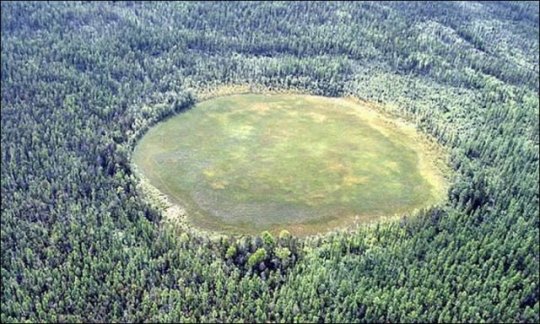
(Asteroid Day ☄さんのツイート: "Why do we observe #AsteroidDay on June 30 each year ? Because of #Tunguska The Tunguska event was a large explosion caused by an #asteroid that occurred in #Siberia, #Russia, on the morning of June 30 1908… https://t.co/oYw9mseXwz"から)
0 notes
Text
For More Than 111 Years, Scientists Puzzled Over The Tunguska Event
https://sciencespies.com/news/for-more-than-111-years-scientists-puzzled-over-the-tunguska-event/
For More Than 111 Years, Scientists Puzzled Over The Tunguska Event


The charred remains of the Forest of Tunguska, picture taken by Soviet scientist Evgeny Krinov in 1929.
Evgeny Krinov
In the early morning of June 30, 1908, something exploded in the sky above the Stony Tunguska river in Siberia, flattening estimated 80 million trees across 820 square miles. Many thousand people in a radius of 900 miles observed the Tunguska Event, and more than 700 accounts were collected later. The reports describe a fireball in the sky, like a second sun, and a series of explosions “with a frightful sound,” followed by shaking of the ground as “the earth seemed to get opened wide, and everything would fall in the abyss.” The indigenous Evenks and Yakuts believed a god or shaman had sent the fireball to destroy the world. Various meteorological stations in Europe recorded both seismic and atmospheric waves. Days later, strange phenomena were observed in the sky of Russia and Europe, like glowing clouds, colorful sunsets, and a weak luminescence in the night.
International newspapers speculated about a possible volcanic explosion. Unfortunately, the inaccessibility of the region and Russia’s unstable political situation at the time prevented any further scientific investigation.
Thirteen years later Russian mineralogist Leonid Alexejewitsch Kulik of the Russian Meteorological Institute became interested in the story after reading a newspaper article, claiming that passengers of the Trans-Siberian Railway observed an impact, even touching the still hot meteorite. Kulik organized an expedition and traveled to the city of Kansk, where he studied reports about the event in the local archives. The story of the train passengers was clearly a hoax, however, Kulik managed to find some articles, describing an explosion observed north of Kansk. From the remote outpost of Wanawara, the team ventured in the now pathless taiga following the Tunguska river. Then on April 13, Kulik discovered a large area covered with rotting logs. A huge explosion flattened more than 80 million trees across 820 square miles. Only at the epicenter of the blast, in the Forest of Tunguska, some dead and charred trees were still standing.
Despite exploring the entire area, no impact crater or meteoritic material was discovered at the site. In the fall of 1927, a preliminary report by Kulik was published in various national and international newspapers. Kulik suggested that an extraterrestrial asteroid exploded in the atmosphere, causing the observed explosion and devastation. The lack of any identifiable impact site was explained by the swampy ground, too soft to preserve a crater. As a result, the supposed impact incident became known as the Tunguska Event.
Leonid A. Kulik at the site of the Tunguska Event, the largest impact event in recorded history.
Russian Archive
Despite its notoriety in pop-culture, scientific data covering this event is sparse. There are some seismic and air-pressure waves registrations, recorded immediately after the blast, and the devastated forest mapped some thirty years later. Based on the lack of hard data, like a crater or a meteorite, and conflicting accounts, many theories of widely varying plausibility were proposed over the years.
Engineer and sci-fi writer Aleksander Kasantsews developed an unusual explanation in the aftermath of Hiroshima and Nagasaki. He argued that a nuclear explosion, equivalent to 1,000 Hiroshima bombs, of possible extraterrestrial origin caused the Tunguska blast, as either a UFO crashed in Siberia or an interplanetary weapon was detonated there for unknown reasons. Apart from the pattern of destruction, so Kasantsews, also geomagnetic anomalies recorded at the station of Irkutsk were similar to a nuclear blast. In 1973, American physicists proposed that a small black hole collided with our planet, causing a matter-antimatter explosion in Earth’s atmosphere.
In recent years the German astrophysicist Wolfgang Kundt and later Jason Phipps Morgan of the Cornell University in Ithaca and Paola Vannucchi from the University of Florence have proposed a terrestrial explanation for the Tunguska explosion. Verneshots, named after author Jules Verne, are speculative magma/gas reactions that violently erupt from the underground. According to this model, a magmatic intrusion beneath Siberia formed a large bubble of volcanic gases, trapped by the basalt-layers of the Siberian Traps. Finally, in June 1908, the covering rocks were shattered by the compressed gases and bursts of burning methane caused the series of explosions as described in some accounts. Chemical residuals from this combustion dispersed in Earth’s atmosphere caused the glowing clouds seen all over the world. This explanation, however, remains speculative at best. Bubbles of gas are observed in the lakes of Siberia, but the methane comes from rotting organic material buried in the frozen soil of the taiga, not from deep underground. Geologists mapping the area also found no traces of shattered rocks or conduits as needed by the Verneshots hypothesis.
The accepted theory explaining the Tunguska Event remains a cosmic body entering Earth’s atmosphere. This idea is supported by the reports describing a fireball descending on the taiga, the presence of impact-related minerals like nanodiamonds, metallic and silicate spherules in sediments, the mapped distribution and direction of the flattened trees, pointing away from a single explosion site, and a link between Tunguska and the Taurid swarm. The nature of this cosmic body remains unclear. A chemical analysis of the metallic and silicate spherules is not possible, as elements from the magmatic rocks forming the bed of the Stony Tunguska contaminate the samples. Some accounts describing a series of explosions lasting more than ten minutes are also hard to explain with a single impactor. In 2007, Luca Gasperini and his research team of the University of Bologna proposed that the small Lake Cheko may have formed by the impact of a fragment of the Tunguska meteorite. Lake Cheko is unusually deep for a region characterized otherwise by shallow ponds, formed by melting permafrost. There’s also no record of the lake existing before 1908, but it’s also true that the region was poorly mapped and explored at the time and not all scientists agree with this theory.
More than a hundred years after the event, only spars clues survive. Seen from above, no evidence whatsoever remains, as trees have recolonized the devastated area. On the ground, only a few stumps of trees killed by the explosion can be found, most already rotten away or buried in the swamp.
#News
0 notes
Text
The Tunguska Event: The most powerful explosion in documented history that still remains a mystery!
https://mybookofmysteries.blogspot.com/p/the-tunguska-event.html
What Happened at Tunguska in 1908?
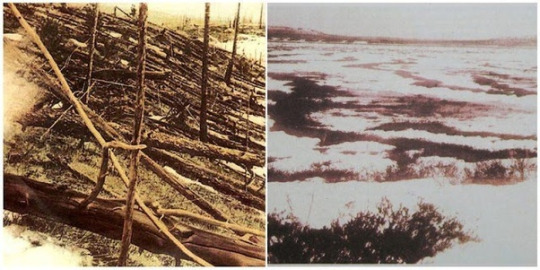
Time : 30 June 1908.
Location : Podkamennaya Tunguska River in Siberia, Russian Empire.
The Tunguska event is the largest impact event on Earth in recorded history.
On 30 June 1908, an explosion ripped through the air above a remote forest in Siberia, near the Podkamennaya Tunguska river.
As witnesses said," A fireball streaked across the daytime sky."
The fireball is believed to have been 50-100m wide. It depleted 2,000 sq km of the taiga forest in the area, flattening about 80 million trees.
It took only moments to explode in the atmosphere just above Siberia’s Podkamennaya Tunguska River, what is the present day Krasnoyarsk Krai of Russia.

Map showing the approximate location of the Tunguska event of 1908.
THE EVENT : It is classified as an impact event, even though no impact crater has been found; the object is thought to have disintegrated at an altitude of 5 to 10 kilometres (3 to 6 miles) rather than to have hit the surface of the Earth.

This armageddon-like event made the earth shiver. Windows shattered in the closest town, some 35 miles away from ground zero. According to the inhabitants of the town, they could feel the heat of the blast and many had also been blown off their feet.
DID YOU KNOW?
It is estimated that the Tunguska explosion knocked down some 80 million trees over an area of 2,150 sq km (830 sq mi), and that the shock wave from the blast would have measured 5.0 on the Richter magnitude scale.
An explosion of this magnitude would be capable of destroying a large metropolitan area, but due to the remoteness of the location, no human fatalities were officially documented.
The 15-megaton (Mt) estimate represents an energy about 1,000 times greater than that of the atomic bomb dropped on Hiroshima, Japan—roughly equal to that of the United States' Castle Bravo (15.2 Mt) ground-based thermonuclear detonation on 1 March 1954, and about one-third that of the Soviet Union's Tsar Bomba explosion on 30 October 1961 (which, at 50 Mt, is the largest nuclear weapon ever detonated).
MUST VISIT : https://mybookofmysteries.blogspot.com/p/the-tunguska-event.html
0 notes
Text
Show Notes for Tunguska Event and Beirut Explosion
Show Notes for Tunguska Event and Beirut Explosion
Tunguska Event and Beirut Explosion
On June 30, 1908 a large explosion devastated an area of 830 square miles in Siberia, Russia. On August, 4 2020 massive multiple explosions in Beirut killed over 157 people and injured more than 5,000. A Minnesotan craft beer is reviewed.
You should subscribe to the Amish Baby Machine Pop Culture Podcast now and follow us on the social media links below!
WEBSIT…
View On WordPress
#American pop culture#amish baby#beer review#Beirut Explosion#craft beer#music#Rants#support amish baby machine podcast#true crime#Tunguska Event
0 notes
Text
Watch Live 24-Hour Webcast for International Asteroid Day
Watch Live 24-Hour Webcast for International Asteroid Day
Every day, Earth is hit by 60 to 300 metric tons of space dust and smaller meteors. But sometimes, larger and more dangerous space rocks plummet to Earth, such as on June 30, 1908 when an estimated 40 meter-wide meteoroid exploded over the Tunguska, Siberia region in Russia, devastating 2000 sq. kilometers (770 square miles) of forest. As the 2013 Chelyabinsk meteor eventattests, the likelihood…
View On WordPress
0 notes
Photo

Asteroid Collision With Earth Inevitable, Say Experts.
The warning comes ahead of the Asteroid Day to be observed on June 30. On that day in 1908, a small asteroid exploded over Tunguska in Russia's Siberia, burning the ground over 2,000 square kilometres. Experts believe an asteroid hitting the Earth is just a matter of time.
LONDON: An asteroid strike on Earth is just a matter of time and it could destroy major cities, experts have said. According to Alan Fitzsimmons from Queen's University Belfast in Britain, it is a case of when an asteroid collision will happen, rather than if it will happen.
The warning comes ahead of the Asteroid Day to be observed on June 30. On that day in 1908, a small asteroid exploded over Tunguska in Russia's Siberia, levelling trees and burning the ground over 2,000 square kilometres.
This year, discussions and presentations will be streamed live from Luxembourg on June 30. Experts including Apollo 9 astronaut Rusty Schweickart and International Space Station astronaut Nicole Stott will answer questions from people on social media.
Mr Fitzsimmons said an unexpected strike today by an asteroid similar in size to the one that exploded over Siberia could easily destroy a major city, and a larger asteroid could be more dangerous.
"It is important to know that scientists and engineers have made great strides in detecting near-Earth asteroids and understanding the threat posed by them," Mr Fitzsimmons said.
"Over 1,800 potentially hazardous objects have been discovered so far, but there are many more waiting to be found," he said.
"Astronomers find near-Earth asteroids every day and most are harmless. But it is still possible the next Tunguska would take us by surprise, and although we are much better at finding larger asteroids, that does us no good if we are not prepared to do something about them," he added.
The risk of a sizeable asteroid hitting the Earth is significantly growing every few years, Czech scientists who analysed 144 fireballs from a recent meteor shower had warned.
The Taurid meteor shower showed significantly enhanced activity in 2015. Researchers found that this was due to a well-defined orbital structure.
Researchers from the Astronomical Institute of the Czech Academy of Sciences recently showed that a "new branch" of Taurids contains at least two asteroids of the size 200-300 metres.
0 notes
Photo
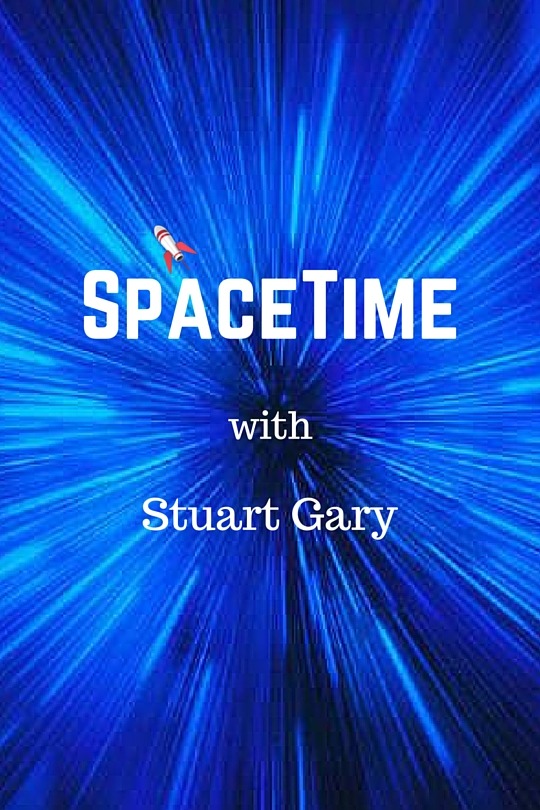

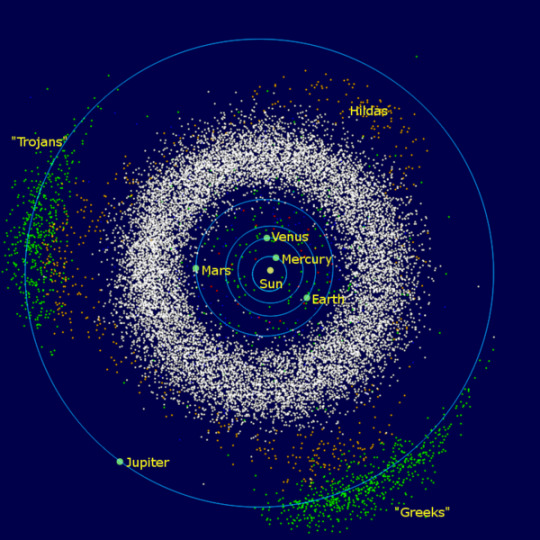
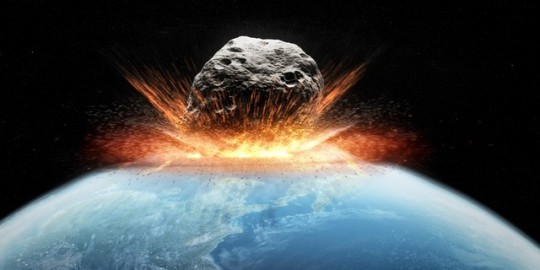
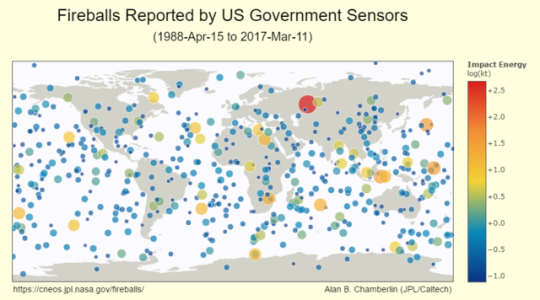

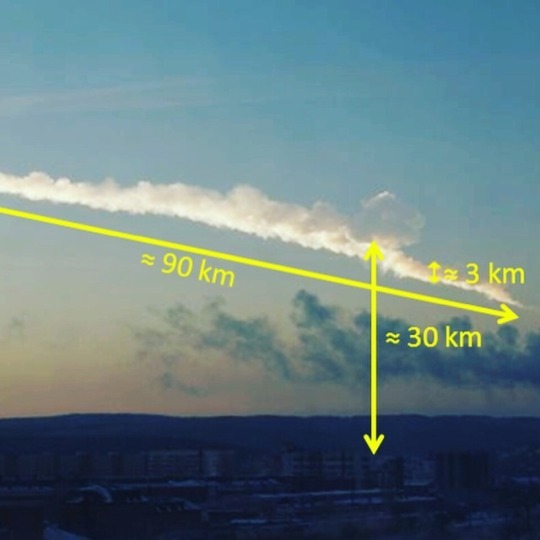
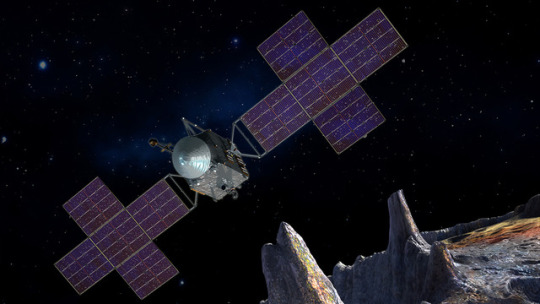

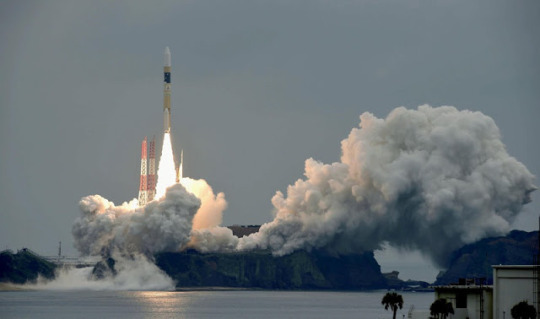
SpaceTime 20170630 Series 20 Episode 51 is now out SpaceTime covers the latest news in astronomy & space sciences. The show is available as a free twice weekly podcast through itunes, Stitcher, Pocketcasts, SoundCloud, Bitez.com, YouTube, Audio Boom, your favourite podcast download provider, and from www.spacetimewithstuartgary.com SpaceTime is also broadcast coast to coast across the United States on Science360 Radio by the National Science Foundation in Washington D.C. around the world on Tune-In Radio and as inflight entertainment aboard Virgin Australia SpaceTime daily news blog: http://spacetimewithstuartgary.tumblr.com/ SpaceTime facebook: www.facebook.com/spacetimewithstuartgary SpaceTime Instagram @spacetimewithstuartgary SpaceTime twitter feed @stuartgary It’s Asteroid day June 30 is asteroid day – marking the anniversary of Earth’s largest asteroid impact in recorded history, the 1908 Tunguska event when an asteroid airburst about ten kilometres above the Tunguska river region of Siberia in eastern Russia. The blast devastated 2150 square kilometers of forest leaving some 80 million trees flattened and reduced to matchwood and lit up the night skies in London -- a third of the way around the globe. The effects of a major asteroid impact on Earth A new study has concluded that when a big asteroid hits the Earth violent winds and shock waves are likely to cause the greatest number of fatalities. The study explored seven effects associated with asteroid impacts--heat, pressure shock waves, flying debris, tsunamis, wind blasts, seismic shaking and cratering. NASA’s mission to the metallic world of Psyche NASA’s Discovery mission to a unique metallic asteroid, has been moved up by a year with the launch now slated for the middle of 2022. The earlier launch date means a more efficient trajectory – bringing the planned arrival time forward to 2026 -- four years earlier than the original timeline. Einstein right again A little more than 100 years after Professor Albert Einstein developed his theory of general relativity, researchers have finally been able to use its laws to directly determine the mass of a white dwarf star by the gravitational bending of light. In a 1936 paper in Science, Einstein lamented that there was no hope of directly determining a white dwarf’s mass by this method – even though theoretically it should be possible. Japanese H-IIA satellite launch A Japanese H2A rocket has blasted into orbit carrying the nation’s second Quasi-Zenith Satellite navigation system spacecraft. Lift off for the Michibiki-2 satellite occurred under cloudy skies at the Tanegashima Space Centre south of Tokyo.
#space#science#Astronomy#astrophysics#cosmology#planetary science#physics#abcstarstuff#human spaceflight#abc starstuff#space exploration#spaceflight#starstuff
41 notes
·
View notes
Photo


TUNGUSKA REVISITED: 111-YEAR-OLD MYSTERY IMPACT INSPIRES NEW, MORE OPTIMISTIC ASTEROID PREDICTIONS Every single day, many tons of tiny rocks -- smaller than pebbles -- hit Earth's atmosphere and disintegrate. Between frequent shooting stars we wish on in the night sky and the massive extinction-level asteroids that we hope we never see, there is a middle ground of rocks sized to make it through the atmosphere and do serious damage to a limited area. Now, new research from NASA indicates that the impacts of these mid-size rocks may be less frequent than previously thought. The research revealed that such relatively small but regionally devastating impacts happen on the order of millennia -- not centuries, as previously thought. In addition, the new research has pushed forward our knowledge about the complex processes that determine how large rocks from space break up when entering Earth's atmosphere. This new research was inspired by a workshop held at NASA's Ames Research Center in Silicon Valley and sponsored by the NASA Planetary Defense Coordination Office. Their results are published in series of papers in a special issue of the journal Icarus. The theme of the workshop: reexamining the astronomical cold case of the 1908 Tunguska impact event. Revisiting Tunguska One hundred and eleven years ago, hundreds of reindeer and a few dozen humans witnessed an asteroid impact -- although they didn't know it at the time. An explosion left a scene in Siberia, Russia, with little evidence of its origin except flattening 500,000 acres of uninhabited forest, scorching the land, creating "glowing clouds" and producing shock waves that were detected around the world. Newspapers reported this may have been a volcanic explosion or a mining accident or -- a far-fetched idea -- that this might have been an asteroid or comet hitting Earth. The event on June 30, 1908, near the Stony Tunguska River, continues to intrigue the public and puzzle researchers. The volcanic and mining explanations were quickly ruled out because of the lack of physical evidence. Researchers concluded the blast came from a massive object colliding with Earth. However, not all the evidence fit -- no one had pictures of the supposed asteroid, no one found a crater and no one found fragments. The first scientific investigators didn't even explore the area until the 1920s. "Tunguska is the largest cosmic impact witnessed by modern humans," said David Morrison, a planetary science researcher at Ames. "It also is characteristic of the sort of impact we are likely to have to protect against in the future." New Scene, New Leads Fast forward to February 15, 2013, when a smaller but still impressive meteor burst in the atmosphere near Chelyabinsk, Russia. New evidence to help solve the mystery of Tunguska had arrived. This highly documented fireball created an opportunity for researchers to apply modern computer modeling techniques to explain what was seen, heard and felt. The models were used with video observations of the fireball and maps of the damage on the ground to reconstruct the original size, motion and speed of the Chelyabinsk object. The resulting interpretation is that Chelyabinsk was most likely a stony asteroid the size of a five-story building that broke apart 15 miles above the ground. This generated a shock wave equivalent to a 550 kiloton explosion. The explosion's shockwave blew out roughly a million windows and injured more than a thousand people. Fortunately, the force of the explosion was not enough to knock down trees or structures. Per current understanding of the asteroid population, an object like the Chelyabinsk meteor can impact Earth every 10 to 100 years on average. But what about the larger rocks that could wipe out a city on a bad day? Researchers have now used these modern-day analysis techniques to revisit the enigmatic 1908 Tunguska event. A long-standing debate about how frequent these events might be is one step closer to being settled. Extrapolating Clues Aided by computer resources and the records from surveys of the devasted region made in the previous century, instead of predicting the likelihood of impact rates based on size alone, modelers performed a statistical study of over 50 million combinations of asteroid and entry properties that could produce Tunguska-scale damage when breaking apart at Tunguska-like altitudes. Some of these new models focused on scenarios that could reproduce the Tunguska treefall pattern plus tree and soil burn distribution. A second looked at combining the recorded atmospheric pressure waves with the seismic signals recorded on the ground at the time. These new approaches, alongside the validation of the models when applied to the Chelyabinsk event, led to revised estimates of what may have happened on that fateful day in 1908. Four different computer modeling codes led to similar conclusions, strengthening confidence in understanding how rocks break apart in our atmosphere. Profiling a Perpetrator The most promising candidate was a stony (not icy) body, between 164 and 262 feet in diameter, entering the atmosphere at around 34,000 miles per hour, depositing the energy of a 10-30 megaton explosion, equivalent to the blast energy of the 1980 Mount St. Helens eruption, at 6-9 miles altitude. When combined with the most recent asteroid population estimates, the researchers concluded the average interval between such impacts to be on the order of millennia -- not centuries as had been thought previously, based on prior population and smaller size estimates. The new result reveals that the probability of an impact occurring on any day in our lifetime, or our kids' lifetimes, or our grandkid's lifetimes, etc., is smaller than we previously thought. Still, we still must remain aware of and prepare for the hazard. Asteroids have hit Earth and more asteroids will hit again. The systems NASA is developing will ensure we can better prepare for and prevent dangerous impacts. "Because there are so few observed cases, a lot of uncertainty remains about how large asteroids break up in the atmosphere and how much damage they could cause on the ground," said Lorien Wheeler, a researcher from Ames, working on NASA's Asteroid Threat Assessment Project. "However, recent advancements in computational models, along with analyses of the Chelyabinsk and other meteor events, are helping to improve our understanding of these factors so that we can better evaluate potential asteroid threats in the future." We are still finding new asteroids and tracking their orbits, refining their impact probabilities and learning more about their makeup with telescopes on Earth and in space, as well as robotic space missions that are studying them up close. Tunguska remains an astronomical cold case, but its mystery is inspiring modern-day investigators to mitigate future threats. TOP IMAGE....An illustration of an asteroid in space Credits: NASA/JPL/Caltech LOWER IMAGE....Trees flattened by the intense shock wave created in the atmosphere as the space rock exploded above Tunguska on June 30, 1908. The photograph was taken by the Soviet Academy of Science 1929 expedition led by Leonid Kulik. 500,000 acres, the size of a large metropolitan city, were flattened. Flattening trees requires an immense shock wave. #WorldAsteroidDay is held every June 30 as a global awareness campaign where people around the world come together to share knowledge about asteroids and learn how to protect our planet. Credits: Wikimedia Commons
0 notes
Photo
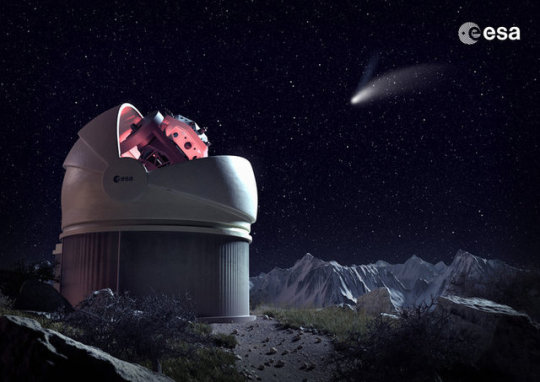

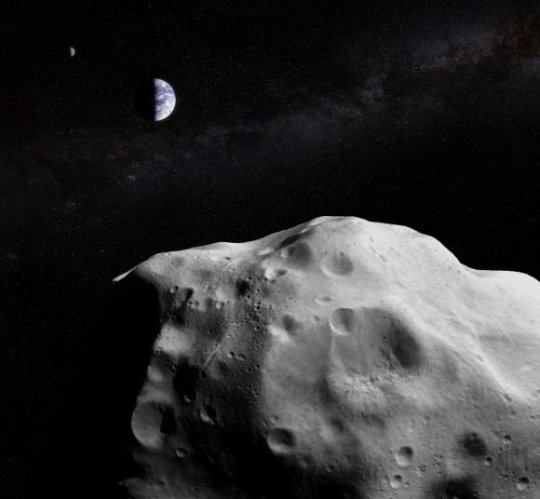
ESA marks #Asteroid Day ESA is developing an automated telescope for nightly sky surveys. This telescope is the first in a future network that would completely scan the sky and automatically identify possible new near-Earth objects, or NEOs, for follow up and later checking by human researchers. The United Nations has declared 30 June to be International Asteroid Day, and ESA is joining other space agencies, astronauts, scientists and even rock stars for a 24-hour global telethon. To mark this year’s Asteroid Day, ESA will take part in a unique, round-the-clock telethon that will be broadcast worldwide from Luxembourg, as well as live on the internet, highlighting the threat from asteroids and other ‘near-Earth objects’ that pose an impact risk. In December 2016, the United Nations proclaimed the last day in June as International Asteroid Day to raise public awareness about asteroid impact hazards. This date, 30 June, marks the anniversary of the largest-ever, in modern times, atmospheric entry of a meteoroid (thought to be a comet or small asteroid), which exploded over the Tunguska region of Siberia in 1908. With an estimated size of over 40 m, it devastated an uninhabited area the size of a major metropolitan city. Detritus in our Solar System such as asteroids and other near-Earth objects – basically, anything whose orbit brings it close to Earth – impact Earth every day. Most of them are little more than small particles of dust and they burn up harmlessly in the atmosphere (have you ever seen a shooting star?). However, larger ones, such as Tunguska – or the 20 m diameter object that exploded high over Chelyabinsk, Russia, on 15 February 2013, with 20–30 times the energy of the Hiroshima atomic bomb – can threaten human health and property. “When Tunguska occurred 109 years ago, humanity was not ready to predict such events,” says Rüdiger Jehn, Co-Manager for NEO activities in ESA’s Space Situational Awareness (SSA) programme. While the search, orbit determination, prediction and confirmation of threatening NEOs comprise part of the SSA programme, ESA also sees asteroids as rich sources for science: remnants of the dawn of our Solar System. The Agency’s first asteroid flyby was performed a hundred years on from the Tunguska airburst when comet-chaser Rosetta imaged asteroid Šteins in 2008, followed by a flypast of asteroid Lutetia two years later. The Agency has been planning future asteroid missions – most recently with the Asteroid Impact Mission, which has been revised into a smaller asteroid scouting mission and is now under study. On 30 June, speakers from ESA will join astrophysicists, astronomers and asteroid experts, including British physicist Prof. Brian Cox, French ESA astronaut and former Head of the European Astronaut Centre Michel Tognini, and specialists at a number of research centres as well as NASA and JAXA, in a 24-hour, live and pre-recorded telethon from Luxembourg starting at 03:00 CEST (full speaker details via the Asteroid Day website). In the Luxembourg studio, Ian Carnelli, manager of ESA's General Studies Programme who is investigating asteroid mission concepts, will join an expert panel, while a full 90-minute segment of the day-long telethon will be produced from ESA’s ESOC mission control centre in Darmstadt, Germany. In the ESOC segment, 10:30-12:00 CEST, ESA’s NEO experts will host a series of presentations in front of a live audience, including ‘Armageddon the movie: separating fact from fiction’, followed by discussions on the need for timely and accurate NEO information. Watch the 24-hour Asteroid Day webcast live via https://asteroidday.org/live on 30 June, starting at 03:00 CEST. In Twitter, follow the #AsteroidDay hashtag, or access the Asteroid Day Facebook page. TOP IMAGE....As part of the global effort to hunt out risky celestial objects such as asteroids and comets, ESA is developing an automated telescope for nightly sky surveys. This telescope is the first in a future network that would completely scan the sky and automatically identify possible new near-Earth objects, or NEOs, for follow up and later checking by human researchers. The telescope, nicknamed ‘fly-eye’, splits the image into 16 smaller subimages to expand the field of view, similar to the technique exploited by a fly’s compound eye. Such fly-eyed survey telescopes provide a very large field of view: 6.7° x 6.7° or about 45 square degrees. 6.7° is about 13 times the diameter of the Moon as seen from the Earth (roughly 0.5 degrees). In the telescope, a single mirror of 1 m equivalent aperture collects the light from the entire 6.7° x 6.7° field of view and feeds a pyramid-shaped beam splitter with 16 facets. The complete field of view is then imaged by 16 separate cameras that contain 16 detectors. The tubes contain a set of secondary lenses. In mid-2014, ESA signed a contract for about €1 million with a consortium led by CGS S.p.A (Italy), comprising Creotech Instruments S.A. (Poland), SC EnviroScopY SRL (Romania) and Pro Optica S.A. (Romania) for the detailed design of the advanced telescope. The first fly-eye telescope is expected to begin operating around 2018. Copyright ESA/A. Baker, CC BY-SA 3.0 IGO CENTRE IMAGE....Amateur picture of the Chelyabinsk asteroid, an approximately 20-metre Near-Earth Object, that entered Earth's atmosphere over Russia on 15 February 2013. The asteroid exploded before touching the ground, generating a bright, hot explosion with a gas cloud, as well as a large shock wave. Former Apollo astronaut Rusty Schweickart describes the experience in this Asteroid Day blog post. Copyright Asteroid Day Blog LOWER IMAGE....Asteroid YB35 safely flew by Earth on 27 March 2014, and was spotted by NASA and observed by the Goldstone Observatory on 20 March 2015. On this day, the asteroid was expected to be in a optimal position so that the observatory could obtain coarse radar images. These measurements helped determine the asteroid's composition. Asteroid YB35 will orbit again near Earth in 2033. This image is an artistic composite, created using images of asteroid Lutetia from ESA, and other images from NASA and ESO. Copyright J. Major
#space#science#Astronomy#astrophysics#asteroids#NEO near Earth objects#physics#planetary science#ESA
4 notes
·
View notes